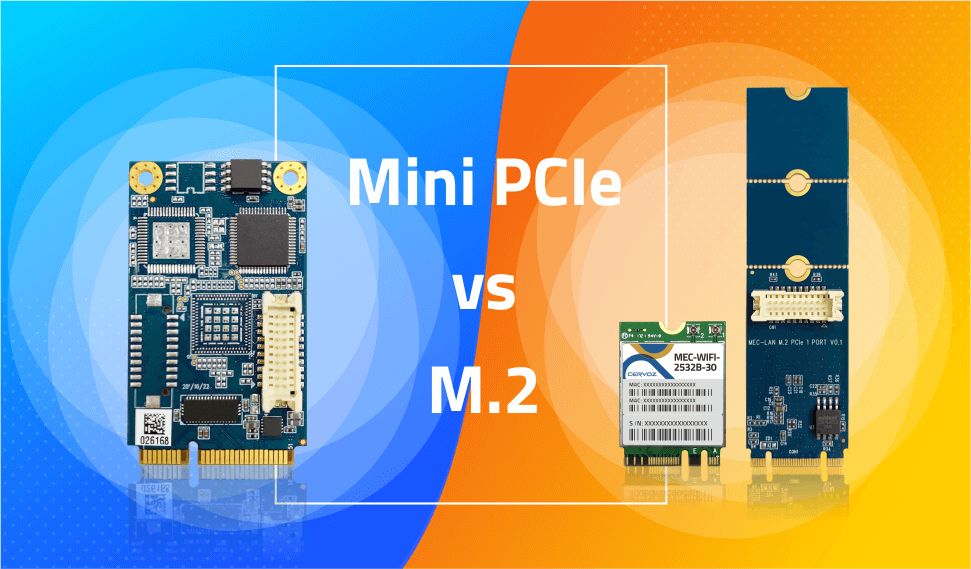BLOG
2022.10.05
Mini PCIe vs M.2
SHARE

IoT (Internet of Things), edge computing, and 5G-and-higher Networks are the following big things for the upcoming decades. Development in technology has progressed way faster than the renewing speed of devices. Therefore, expansion cards have become popular as an instant and less-costly way to upgrade existing equipment.
In most industrial applications, two vying standards of small-form-factor expansion cards are commonly used: M.2 (also known as NGFF, Next Generation Form Factor) and mini PCIe (mini Peripheral Component Interconnect Express, also called mPCIe).
What is M.2?
Lunching ten years ago, M.2 has gradually become the primary standard for industrial electronic devices and has variated in many forms. M.2 evolved from NGFF, originally designed to be internally mounted in thin laptops. As a result, the M.2 form factor is smaller, thinner, and lighter than other standards. Meanwhile, its advanced interface bus can support higher data transfer rates.
Up to now, mPCIe is still prevalent in the industry due to its rigidness and reliability. Therefore, most industrial application products still adopt the mPCIe standard. However, with the rise of the 5G network, M.2 has become popular since it supports a higher data transfer rate and can upmost the 5G network performance. Also, the thinner and smaller M.2 form factor is a great fit for the connector technology of 5G massive MIMO (Multiple Input Multiple Output), a key enabling antenna technique of the 5G network.
In brief, m.2 is newer, faster, and smaller. But high performance comes with high temperature, thus challenging reliability. M.2 expansion solutions rely on efficient and sophisticated heat dissipation technology to optimize performance. However, as demand drives development and growth, we are peaking into the trend of M.2 becoming the next-gen mainstream standard through its increasing popularity.
What is mPCIe?
mPCIe evolved from PCIe, a form factor designed for desktop PC plug-ins. Before M.2 came out, mPCIe had been around for nearly a decade. It is tested and well understood. It has a relatively simpler interface bus protocol and is more favored by designers. The single-sided design makes it capable of being mounted directly on heat dissipation solutions for better thermal stability and higher reliability.M.2 or mPCIe, which one is better?
Trends in industry and networking have prompted the expansion cards to shrink in size and support high-speed data workloads. Both M.2 and mPCIe standards meet the above demands. Their competition begins in the wireless network domain and has now gradually expanded to other solutions.Up to now, mPCIe is still prevalent in the industry due to its rigidness and reliability. Therefore, most industrial application products still adopt the mPCIe standard. However, with the rise of the 5G network, M.2 has become popular since it supports a higher data transfer rate and can upmost the 5G network performance. Also, the thinner and smaller M.2 form factor is a great fit for the connector technology of 5G massive MIMO (Multiple Input Multiple Output), a key enabling antenna technique of the 5G network.
In brief, m.2 is newer, faster, and smaller. But high performance comes with high temperature, thus challenging reliability. M.2 expansion solutions rely on efficient and sophisticated heat dissipation technology to optimize performance. However, as demand drives development and growth, we are peaking into the trend of M.2 becoming the next-gen mainstream standard through its increasing popularity.

